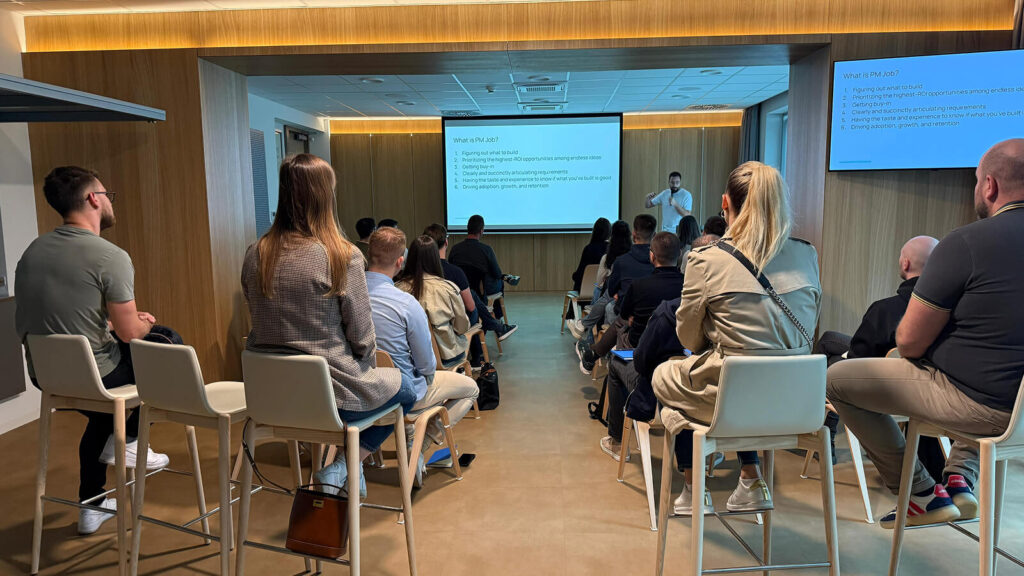Last weekend, we hosted the fourth session of the Sofascore Product Management Academy. Once again, our office filled with ideas, questions, and conversations about what it really takes to build a great product. This time, we were joined by Ante Sladojević, AI Senior Product Manager at ESL FACEIT Group, and our very own Zlatko Hrkać, Sofascore’s co-founder and CEO.
Two speakers, two very different journeys, but both full of practical advice and a few “you had to be there” stories.
“You’re the User’s Voice in the Room”
Ante opened the session with an honest look at life as a product manager.
“You represent the user and the business,” he said. “You need to constantly explain to everyone why something is being built and what exactly needs to be done.”
Ante Sladojević, AI Senior Product Manager at ESL FACEIT Group
That means checking data daily, testing constantly, and listening to user feedback, even when it’s a bit hard to hear. He gave a great example from the gaming world: some players weren’t using their microphones to communicate strategy. At first, it seemed like a tech issue. But in reality, they didn’t know how to use the feature. Education, not just features, was the missing piece.
And communication came up a lot. Ante even pays out of his own pocket for communication training to get better at explaining product work.
He also stressed the cost of wrong turns:
“It’s really expensive to have engineers spend the whole day building the wrong thing.”
Ante Sladojević, AI Senior Product Manager at ESL FACEIT Group
That’s why prioritization matters, and tools like the “impact vs. effort” model can make all the difference.
Oh, and be ready to write more than code or specs. Regular weekly reports help show that you’re tracking progress and communicating clearly. It’s not just about the work. It’s about making sure others understand the work.
Zlatko’s Story: From Rejection Emails to Global Reach
Then it was Zlatko’s turn to take the floor, and take us back to Sofascore’s early days. From building the platform with a small team to rejecting a buyout offer from Flashscore in 2013, it was a mix of startup hustle, product vision, and a few good stories that made the room laugh.
He talked about the challenges of competing with platforms that redirected traffic, copied features, and found creative workarounds to grow.
“We were always more technically advanced,” Zlatko said. “But we built trust by focusing on long-term value and the users themselves.”
Zlatko Hrkać, co-founder and CEO of Sofascore
Some of the best stories came from trial-and-error moments—like when Sofascore “borrowed” some data to improve coverage, or when a dodgy ad deal with a Chinese network backfired, costing $5,000 but eventually leading to better traffic strategies.
And then came the moment everyone remembers.
“There’s a user who tattooed Sofascore’s attack momentum graph on his arm,” Zlatko said. “That’s the level of passion we’re working with. These are our users: fanatical in the best way, both about our product and everything we do.”
Zlatko Hrkać, co-founder and CEO of Sofascore
You can read here more about that crazy tattoo story.
What We Took Away
This session wasn’t about theories. It was about the small things that make a big difference – clear communication, regular feedback, smart prioritization, and staying connected to the real people using your product.
As always, we wrapped up feeling inspired and excited to keep building features that make fans proud. Even if no one else gets a tattoo. (But hey, we’re not stopping them.)
